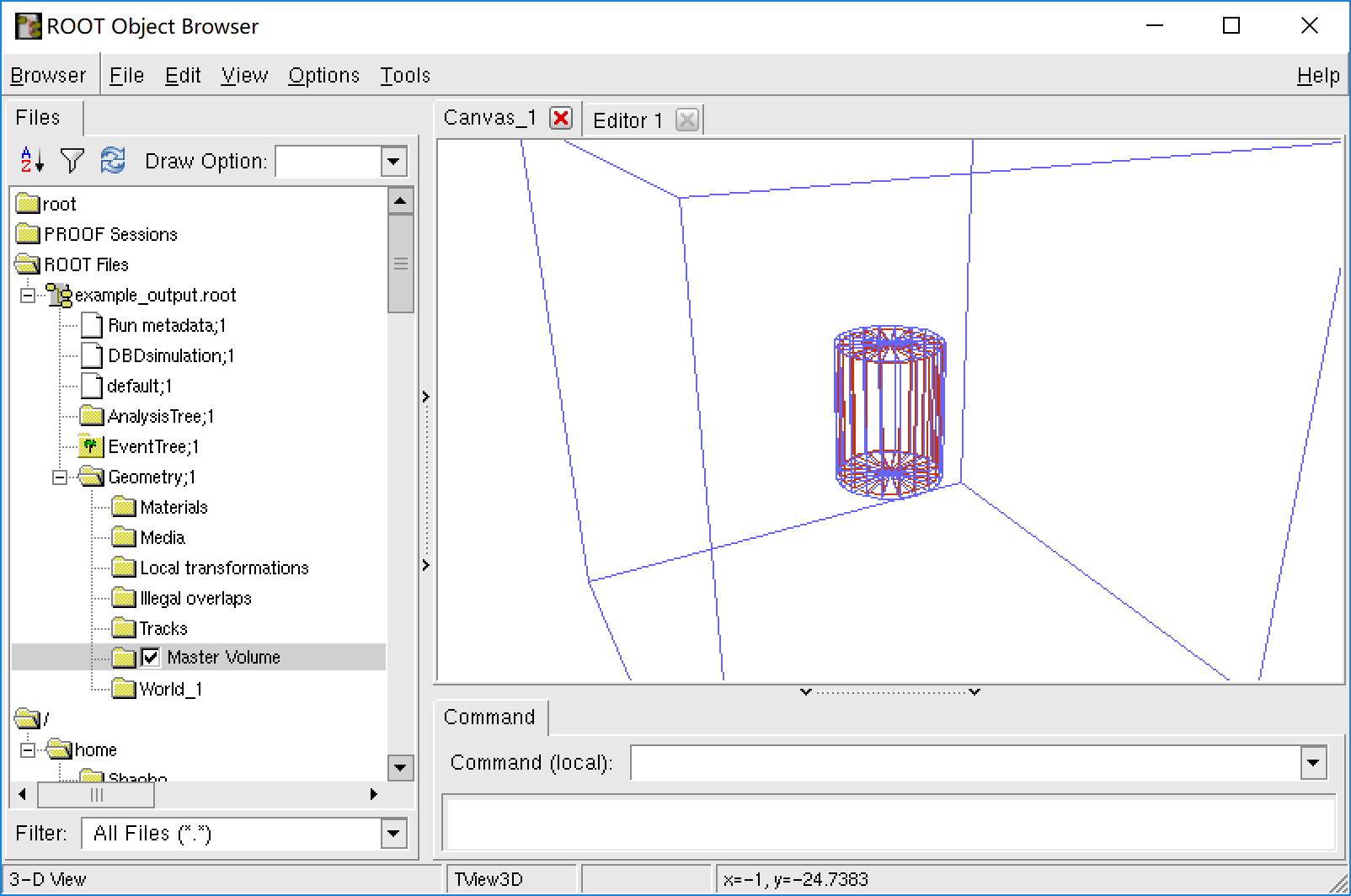Several example rml files have been added into restG4 example directory. To start our first geant4 simulation, we enter the following directory and run restG4:
:~$ cd $REST_PATH/example/restG4template
:restG4template$ restG4 restG4.rml
Then, a geant4 simulation will start for 100 events, generating a file “example_output.root”. This root file contains a TTree with branch TRestGeant4EventBranch, and a TGeoManager named “Geometry”. We can view them in TBrowser.

With restG4, we can do a two-step simulation to test our detector response. First use restG4 to generate root file with raw event data. Then use REST build-in processes to convert this root file into signal event(readout waveform), which is very close to the data we get from real world detector. Then we can try our analysis algorithm upon this simulation data.
For example, we process the previous output file with the example rml:
:restG4template$ restManager --c ../simDataAnalysis.rml --i example_output.root --o abc.root
This gives us information of cut efficiency of track recognition.